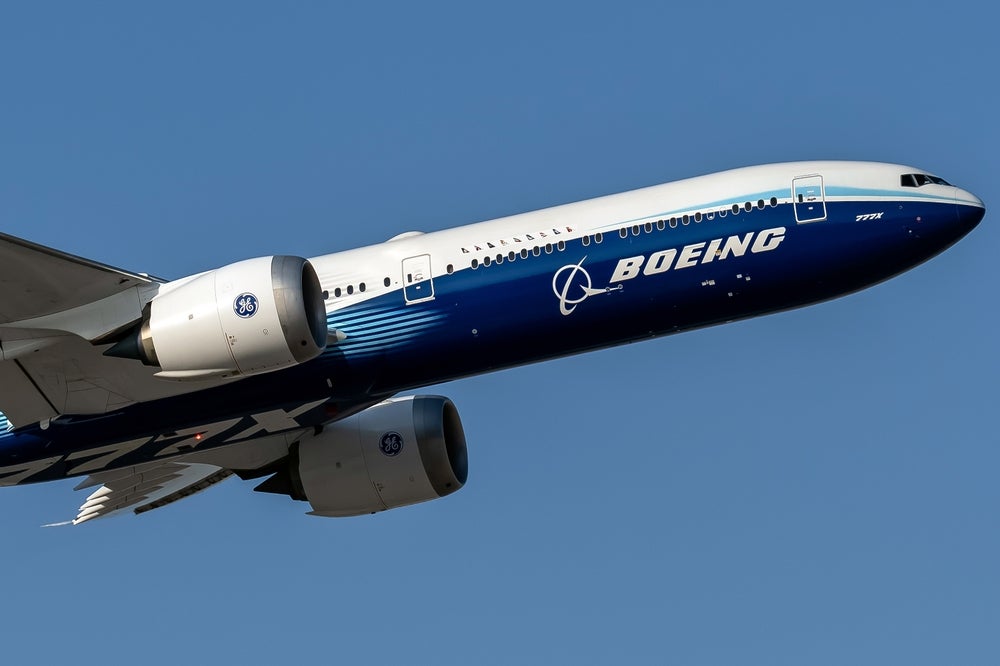
A European consortium of companies, including CO2 capture technology company Climeworks and Norsk is planning to build the first commercial plant for renewable aviation fuel in Europe.
Situated in Norway and set to be operational by 2023, the plant will utilise power-to-liquid technology to produce 100 million litres of renewable fuel by 2026, saving more than 250,000 tonnes of CO2 from the aviation industry every year.
Climeworks’s Daniel Egger explains how the project came about.
Ilaria Grasso Macola (IGM): How did the project come about?
Daniel Egger (DE): We had been working successfully with Sunfire on several projects before, so when they approached us to be part of this new consortium, with the aim of creating jet fuel from renewable sources, we were delighted to join.
How well do you really know your competitors?
Access the most comprehensive Company Profiles on the market, powered by GlobalData. Save hours of research. Gain competitive edge.

Thank you!
Your download email will arrive shortly
Not ready to buy yet? Download a free sample
We are confident about the unique quality of our Company Profiles. However, we want you to make the most beneficial decision for your business, so we offer a free sample that you can download by submitting the below form
By GlobalData
IGM: What was the rationale behind the project?
DE: Norsk e-Fuel exists to make transportation renewable. Norsk e-Fuel substitutes fossil crude oil by generating renewable fuels from carbon dioxide and water using 100% renewable electricity. The goal is to achieve climate-neutral transportation.
IGM: For those who don’t know, what is power-to-liquid and how does it work?
DE: The production process is based on three steps. Firstly, CO2 is captured by Climeworks’s carbon dioxide removal, then through a process of high-temperature electrolysis, the steam and CO2 are split into hydrogen, carbon monoxide and oxygen.
Lastly, the Fischer-Tropsch synthesis method is used to convert the synthesis gas, CO2 and H2, into a mix of petrol, diesel, kerosene, waxes and other raw products.
Known as renewable crude, the mix is suitable for further processing at refineries or in the chemicals industry.
The raw materials used are therefore water and CO2. The latter can be gathered in industrial or biogas plants or extracted straight from the ambient air using Climeworks’s direct air capture technology.
The third element required alongside CO2 and water is the green energy used to carry out electrolysis and conversion. The synthesis which occurs at the end of the process is self-sufficient and does not require any additional electrical energy.
Instead, as an exothermic process, it gives off heat which can be reused for the generation of steam in preparation for electrolysis.
The integration of the high-temperature steam electrolysis technology Norsk e-Fuel aims to industrialize has made it possible to increase the efficiency of the Power-to-Liquids process to 55-65%.
This significant enhancement in efficiency represents a big step on the path towards system profitability, which is now essentially dependent on the price of green energy and political circumstances.
IGM: What is Climeworks’s role in the project?
DE: Climeworks is contributing its direct air capture (DAC) technology and know-how to help create renewable crude.
Climeworks’s direct air capture (DAC) technology filters carbon dioxide directly from the ambient air. The key element of Climeworks’s technology is a filter material, which selectively captures CO2.
Firstly, the air is drawn into the CO2 collector using a fan, where it is then captured on the surface of the filter material.
Secondly, when the filter material is fully saturated, the CO2 collector is closed and the temperature is increased to between 80° and 100 °C. The CO2 thereby releases at a purity of over 99%. The CO2 is then cooled to 45 °C, collected and delivered to the next stage of the refining process where it will eventually become jet fuel.
IGM: What kind of challenges have you encountered?
DE: The consortium consists of four partners, each with unique approaches and great expertise in their respective fields. These partners have come together to realize the vision of renewable transport. There have been challenges on the way, but our strength is our variety of expertise, and this has helped us overcome the obstacles. It’s the consortium’s biggest advantage.
IGM: What are the pros and cons of renewable aviation fuel?
DE: Like shipping and heavy long-haul road transportation, aviation cannot shift to electric drive or hydrogen fuel in the short- and mid-term on the same scale as the automotive sector.
So, for larger-scale flights over longer distances, an alternative to fossil jet fuel has to be developed in the short-term. This is where renewable jet fuel comes into play.
IGM: How will your fuel impact the wider aviation sector?
The aviation industry is responsible for about 2% of all CO2 emissions caused by humanity. This number could go up to five per cent, as forecasts predict a continuing growth of the aviation sector. To limit the effect on the environment, the aviation industry has committed itself to carbon-neutral growth from 2020 onwards.
Whereas emissions reductions might be possible through electrification or hydrogen to some extend in the long-term, there are no short- and mid-term alternatives to hydrocarbon fuels (such as diesel and kerosene) for long haul road transport, shipping and commercial aviation.
Therefore, there is an increasing consensus that an efficient and available way to reduce carbon emissions in the aviation sector is to commercialize the technology for renewable jet fuels from the air.
We will provide renewable crude, which will secure a renewable supply chain.




